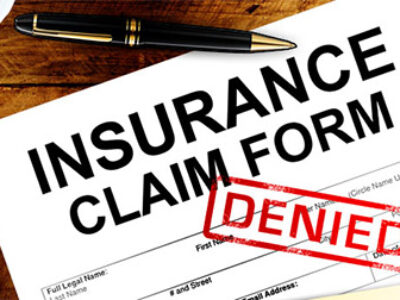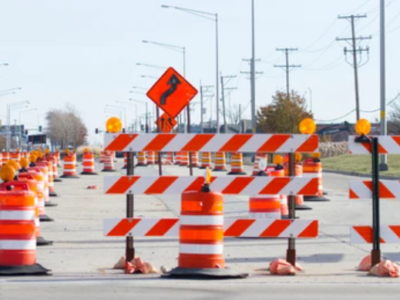Every summer, California’s outdoor labor force faces an invisible but deadly threat: heat-related illness. From field laborers to roofers and construction crews, working under direct sunlight without proper precautions can result in debilitating, even fatal, outcomes. California’s rising temperatures, made worse by climate change, are turning occupational heat safety into a legal and medical priority.
Outdoor workers face not just dehydration and exhaustion, but also potential job loss, mounting medical bills, and denied insurance claims. Understanding how to recognize, prevent, and legally respond to heat-related illness is both a health priority and a workers’ rights issue.
Recognizing the Symptoms of Heat-Related Illness
The summers in California being what they are, it’s important for outdoor workers to keep from suffering a heat-related illness like heat exhaustion, heat rash, heat cramps or even heat stroke. First off, workers should know how to recognize these conditions.
Arising from the loss of water and salt, heat exhaustion is connected to excessive sweating, muscle cramps, dizziness, and confusion. It can be accompanied by cramps, usually in the abdomen, leg, and arms, and by rashes, which appear as red clusters of pimples or blisters on the neck, around the upper chest, or in the elbow creases. Heat stroke develops when the body can no longer regulate its temperature. Symptoms include:
- Lack of sweating
- A rapid pulse
- Chills
- Slurred speech
Medical Insight into Heat Illness Progression
The human body regulates temperature through sweating and blood flow. However, when heat is trapped, either by external conditions or poor hydration, core temperature rises. Here’s how that manifests:
- Heat rash results from sweat ducts becoming blocked.
- Heat cramps signal salt depletion and electrolyte imbalance.
- Heat exhaustion begins with systemic dehydration, impacting neurological clarity and muscle function.
- Heat stroke, a medical emergency, results from complete thermoregulatory failure. Brain and organ damage can begin within 15 minutes of onset.
Note: A person suffering from heat stroke may stop sweating entirely, a critical warning sign.
How to Prevent Heat-Related Conditions at Work
Preventing heat-related illness is largely a matter of developing certain habits. Workers should drink plenty of water while avoiding dehydrating liquids like tea, coffee, and alcohol. They should eat small meals high in fiber but not high in protein. They will want to take frequent breaks, preferably in a shady or air-conditioned spot, and not rush through a job.
Expanded Prevention Strategies with Practical Applications
1. Hydration Strategy by Work Role
Fieldworkers, landscapers, delivery drivers, and roofers all need distinct hydration routines. As a rule of thumb:
- 15–20 oz of water per hour in hot environments.
- Mix with electrolyte drinks (not just water) if sweating excessively.
- Avoid diuretics like coffee or sodas.
2. Nutrition Before and During Work
A high-fiber, moderate-carb breakfast can help maintain energy without overheating. Examples include oatmeal, whole-grain toast, bananas, and yogurt. Heavy protein loads before work should be avoided as they increase core heat during digestion.
3. Workwear Optimization
Light-colored, loose-fitting, and moisture-wicking fabrics reduce core heat buildup. Innovative cooling vests or damp bandanas around the neck and head also help maintain safe body temperatures.
4. Break Designation and Work Cycles
Employers should create rotational schedules, ensuring no worker stays in direct sunlight for more than 30–45 minutes at a time without a break. Cooling stations and misting fans should be provided at job sites.
Understanding Your Employer’s Legal Duties Under OSHA
California law is particularly strict in enforcing worker safety regarding heat exposure.
What Employers Are Required to Provide:
- Access to fresh, cool drinking water
- Shaded rest areas or air-conditioned break spaces
- Post emergency heat illness prevention plans
- Acclimatization periods for new workers or those returning after illness
- Mandatory employee training in heat illness symptoms and emergency response
Failure to meet any of these can be grounds for negligence under California Labor Code Section 6400 and OSHA’s Title 8, Section 3395.
Legal Action: Workers’ Compensation for Heat-Related Illness
Workers’ compensation law allows the payment of benefits to employees who suffer an occupational injury or illness. Technically, you would not have to prove that you were free of blame, but your employer may bring this up as a way to deny payment. The employer may also deny payment by saying that you failed to report your illness in time. For this and other reasons, you may want a lawyer to help you file your workers’ comp claim.
Expanded Legal Guidance
If you suffer a heat-related illness at work, you are likely eligible for workers’ compensation, regardless of whether the incident was your fault. But many workers face obstacles when trying to get their claims approved.
1. Your Legal Rights Include:
- Payment of all medical expenses
- Temporary disability benefits during recovery
- Permanent disability if the illness causes long-term harm
- Vocational rehabilitation if you cannot return to your previous job
2. Employer Tactics to Watch For:
Employers may attempt to:
- Argue you were negligent (e.g., didn’t hydrate)
- Deny that the illness was work-related
- Say you didn’t notify them in time
That’s why it’s essential to report the illness immediately and seek legal counsel if there’s any dispute.
FAQs: Common Questions about Heat Illness and Legal Claims
Can I still file for workers’ comp if I didn’t go to the hospital?
Yes. Medical documentation is important, but even urgent care or clinic visits count. You may also present workplace witness testimony.
What if I’m undocumented?
Undocumented workers are protected under California law and can file for compensation.
How long do I have to file a claim?
You must report the incident within 30 days and file your DWC-1 form as soon as possible. Waiting too long may result in a denial.
Can I sue my employer outside of workers’ comp?
If the employer’s actions were grossly negligent or violated OSHA standards, a third-party claim or lawsuit may be possible in addition to workers’ comp.
Speak with a California Heat Illness Compensation Lawyer
If you’ve suffered heat exhaustion, cramps, or stroke while working in the California sun, you may be entitled to compensation. Don’t risk a denied claim or partial payment.
Schedule Your Free Consultation with Hussain & Gutierrez Law
Specialists in Workers’ Compensation and Employer Negligence Cases
Get legal advice now before deadlines pass.



